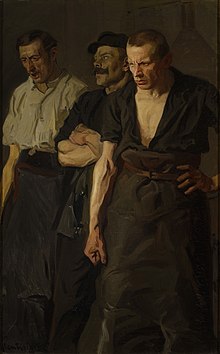
Anti-union violence is physical force intended to harm union officials, union organizers, union members, union sympathizers, or their families. It is most commonly used either during union organizing efforts, or during strikes. The aim most often is to prevent a union from forming, to destroy an existing union, or to reduce the effectiveness of a union or a particular strike action. If strikers prevent people or goods to enter or leave a workplace, violence may be used to allow people and goods to pass the picket line.
Violence against unions may be isolated, or may occur as part of a campaign that includes spying, intimidation, impersonation, disinformation, and sabotage.[1] Violence in labor disputes may be the result of unreasonable polarization, or miscalculation. It may be willful and provoked, or senseless and tragic. On some occasions, violence in labor disputes may be purposeful and calculated,[2] for example the hiring and deployment of goon squads to assault strikers.
Incidents of violence during periods of labor unrest are sometimes perceived differently by different parties. It is sometimes a challenge to ascertain the truth about labor-related violence, and incidents of violence committed by, or in the name of, unions or union workers have occurred as well.
© MMXXIII Rich X Search. We shall prevail. All rights reserved. Rich X Search
